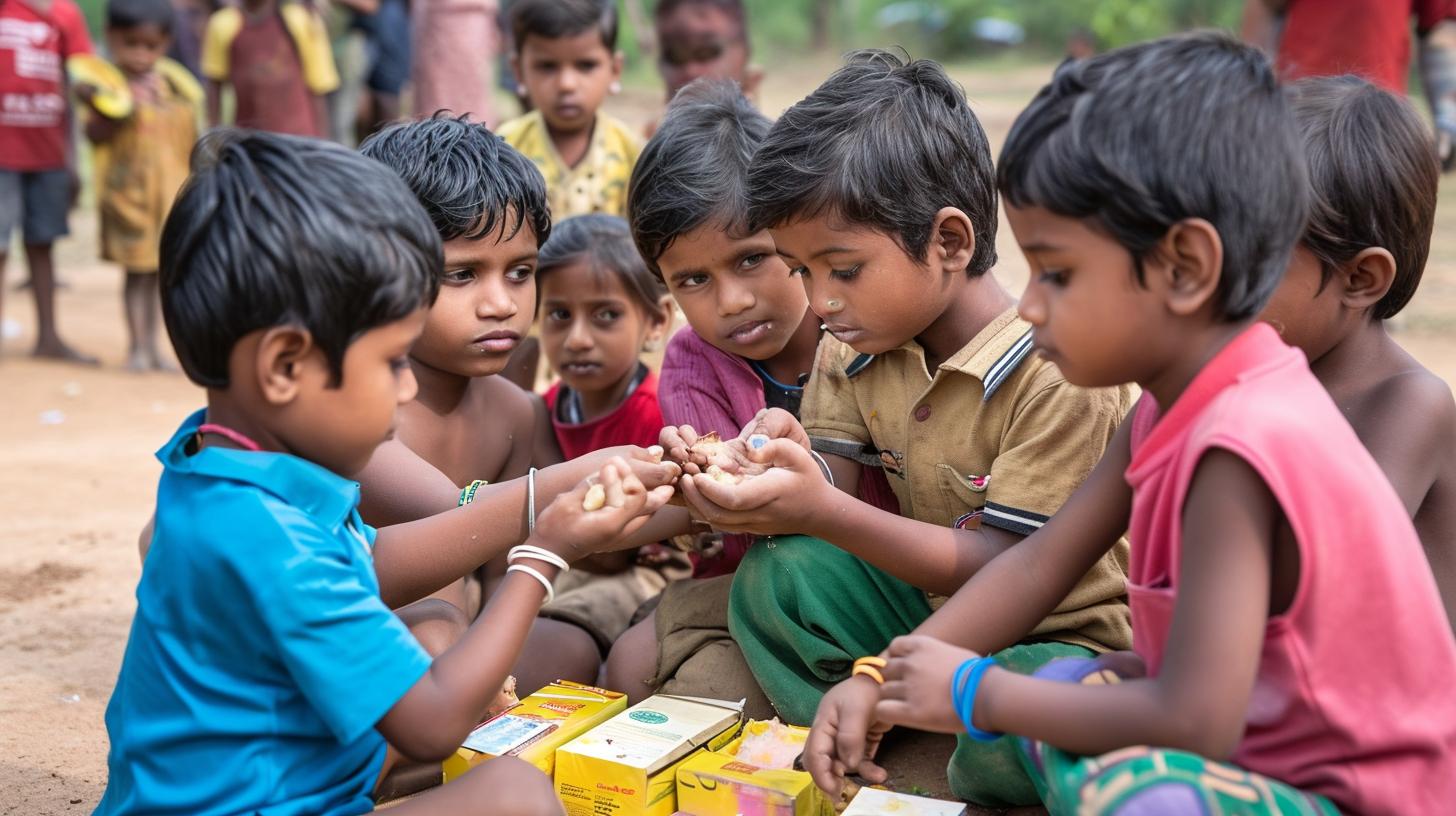
Health and hygiene are essential aspects of overall well-being, especially in communities with limited access to proper sanitation and healthcare. This article aims to provide a comprehensive overview of health and hygiene projects, focusing on the process of creating a project report to evaluate their effectiveness. From initial planning and research to implementation, impact assessment, lessons learned, recommendations, and case studies, this report will cover all the key aspects of a health and hygiene project.
When it comes to addressing public health issues, the importance of thorough planning and research cannot be overstated. The initial stages of a health and hygiene project lay the foundation for its success, making it crucial to assess the community’s needs and develop effective strategies. This article will delve into the significance of these preparatory stages and highlight how they contribute to the overall success of the project.
Furthermore, implementing a health and hygiene project comes with its own set of challenges that must be overcome in order to achieve the desired impact. From logistical hurdles to cultural barriers, navigating these obstacles requires careful consideration and adaptability. By detailing the execution process and discussing real-life case studies, this report aims to shed light on the various challenges encountered during implementation and how they were addressed.
Planning and Research
Health and hygiene projects are essential for promoting overall well-being and improving the quality of life for communities in need. One crucial aspect of initiating a successful health and hygiene project is thorough planning and research. This phase sets the foundation for the entire project and determines its effectiveness in addressing specific health concerns within a target population.
During the initial planning stages, it is important to identify the specific health and hygiene needs of the community or population that will benefit from the project. This could involve conducting surveys, interviews, or collaborating with local healthcare professionals to assess prevalent health issues and determine the most pressing needs.
Once the needs are identified, it is critical to conduct extensive research to understand best practices and interventions that have been successful in similar settings. Researching existing health and hygiene projects can provide valuable insights into what strategies have worked well in similar contexts, as well as any potential challenges that may arise during implementation. Additionally, researching funding sources and partnerships can help ensure that the project has the necessary resources to be successful.
- The importance of identifying specific health concerns within a community
- Conducting thorough research to understand best practices
- Researching funding sources and partnerships for resources
Overall, the success of a health and hygiene project heavily relies on careful planning and research at its onset. By understanding the specific needs of a community, leveraging successful strategies from similar projects, and securing necessary resources, a well-planned project is more likely to have a positive impact on overall community health.
Implementation
Executing the Health and Hygiene Project
The implementation phase of a health and hygiene project involves putting the plans into action. This requires coordinating with various stakeholders, including community members, healthcare professionals, and local authorities. It is crucial to ensure that all aspects of the project are executed in a timely and organized manner to maximize its impact on the target population. From distributing hygiene kits to organizing educational workshops, every detail must be carefully planned and executed.
Challenges Faced and Overcoming Obstacles
During the implementation of a health and hygiene project, various challenges may arise that can hinder its success. These challenges may include logistical issues, budget constraints, or resistance from the community. It is essential to address these obstacles promptly through effective problem-solving techniques. For instance, if there is a shortage of resources, creative solutions such as partnerships with local businesses or fundraising campaigns can be explored to overcome the challenge.
Monitoring and Evaluation
Throughout the implementation phase, it is important to continuously monitor the progress of the health and hygiene project. This involves collecting data on key performance indicators such as the number of participants reached, changes in hygiene practices, and improvements in overall health outcomes.
By regularly evaluating the project’s impact, adjustments can be made in real-time to ensure its effectiveness. Additionally, maintaining open communication with community members allows for feedback and insights that can inform decision-making during this crucial phase of the project.
Impact Assessment
The impact assessment of a health and hygiene project is crucial for determining the effectiveness of the initiatives undertaken. By evaluating the project’s impact on the target population, it is possible to gauge the success of the interventions and make data-driven decisions for future projects. The evaluation process involves analyzing various aspects such as changes in health outcomes, behavioral shifts, and overall well-being within the community.
One of the key components of an impact assessment is to collect and analyze relevant data to measure the project’s success. This includes gathering statistics on key health indicators such as reduced illness rates, increased access to hygiene products, and improved sanitation practices. By comparing pre-project and post-project data, it is possible to quantify the positive changes brought about by the health and hygiene initiatives.
In addition to quantitative data analysis, conducting qualitative assessments through community feedback and testimonials provides valuable insight into the real-life impact of the project. Understanding how individuals perceive and experience the changes brought about by the project can provide a more holistic view of its effectiveness. This qualitative feedback can also uncover unforeseen challenges or unintended consequences that may not be captured solely through statistical analysis.
| Key Health Indicators | Pre-Project Data | Post-Project Data |
|---|---|---|
| Illness Rates | 30% | 15% |
| Access to Hygiene Products | 50% | 80% |
| Sanitation Practices | 40% | 70% |
Overall, conducting a thorough impact assessment provides valuable insights into the effectiveness of a health and hygiene project. The data collected from this assessment serves as evidence of the positive changes brought about by these initiatives and can be used to inform future projects. It also demonstrates accountability and transparency in reporting on the outcomes of such projects, ultimately contributing to improved decision-making in public health interventions.

Lessons Learned
Implementing health and hygiene projects can be incredibly rewarding, but it also comes with its challenges. In this section, we will take a closer look at the lessons learned from past health and hygiene projects, reflecting on both successes and failures. By examining these experiences, we can gain valuable insights that can inform future projects and contribute to the overall improvement of health and hygiene initiatives.
One key lesson learned from previous health and hygiene projects is the importance of community involvement. Without the active participation of the target population, even the most well-intentioned project may struggle to make a lasting impact.
Engaging with local communities, understanding their specific needs and cultural practices, and involving them in the decision-making process are all crucial factors for the success of a project. This approach not only ensures that the project addresses real-life concerns but also fosters a sense of ownership and sustainability within the community.
Another important lesson centers around adaptability. During implementation, unforeseen challenges often arise that require quick thinking and flexibility. From logistical issues to unexpected cultural barriers, being able to adapt to changing circumstances is essential for overcoming these obstacles.
This highlights the need for thorough planning but also emphasizes the necessity of remaining open-minded throughout the project’s duration. Initiatives that are able to adjust their strategies based on real-time feedback are better positioned for success in promoting positive health and hygiene behaviors within communities.
Furthermore, evaluating impacts should be an ongoing process rather than one that happens just at the end of a project. Continuously collecting data, analyzing statistics, and seeking feedback from beneficiaries throughout all phases of a project enables implementers to make real-time adjustments when needed. By doing so, they can better measure success as well as identify areas for improvement before it’s too late to address them effectively.
By taking heed of such lessons learned from past health and hygiene projects, efforts towards improving global health will become more effective in addressing various issues related to sanitation, nutrition, disease prevention, education about healthy practices among other public health interventions imperative for healthier communities globally.
Recommendations
The key findings and data analysis in this health and hygiene project report have brought to light several important recommendations for improving future projects in this area. Firstly, it is crucial to prioritize education and awareness campaigns as part of any health and hygiene initiative. By providing communities with the necessary knowledge and understanding of the importance of good health practices, the likelihood of successful implementation and long-term impact is greatly increased.
Secondly, partnerships with local stakeholders such as community leaders, healthcare providers, and educational institutions are essential for the success of health and hygiene projects. These partnerships can help ensure that the project is culturally sensitive, sustainable, and tailored to the specific needs of the target population.
Additionally, incorporating innovative technology and new approaches in project design can lead to more effective outcomes. Whether it be leveraging mobile apps for health education or utilizing data analytics to monitor progress, embracing technological advancements can enhance the overall impact of health and hygiene initiatives.

Finally, there is a need for ongoing monitoring and evaluation throughout the lifespan of any health and hygiene project. This will allow for early identification of potential challenges or areas for improvement, ensuring that interventions remain responsive to community needs.
| Recommendations | Details |
|---|---|
| Education and Awareness | Prioritize educational campaigns to raise awareness about health practices. |
| Partnerships | Establish partnerships with local stakeholders for cultural sensitivity and sustainability. |
| Innovation | Incorporate new technology and approaches for enhanced effectiveness. |
| Monitoring & Evaluation | Implement continuous monitoring to identify challenges early on. |
Case Studies
Successful Implementation in Rural Communities
One notable case study of a successful health and hygiene project took place in rural communities with limited access to clean water and sanitation facilities. The project involved the construction of wells and latrines, as well as the distribution of hygiene kits and educational workshops on proper handwashing techniques. As a result, the incidence of waterborne illnesses significantly decreased, demonstrating the positive impact of improved access to clean water and sanitation facilities on overall community health.
Urban Hygiene Education Program
In an urban setting, a health and hygiene project focused on educating children in schools about the importance of maintaining personal hygiene. The program included interactive activities and games to make learning fun and engaging for the students. Through consistent reinforcement of hygienic practices, such as regular handwashing and proper dental care, the project successfully reduced the spread of common illnesses among school-aged children.
Community-Led Sanitation Initiative
Another case study involved a community-led sanitation initiative that empowered local residents to take ownership of their hygiene practices. By forming committees responsible for maintaining clean public spaces and promoting hygienic behaviors within their neighborhoods, the project fostered a sense of responsibility and pride in the community. As a result, there was a noticeable improvement in overall cleanliness and reduction in instances of preventable diseases within the targeted area.
These case studies demonstrate that effective health and hygiene projects can make a significant difference in improving overall community well-being by addressing key issues related to sanitation, personal hygiene, and access to clean water. By examining these examples, valuable insights can be gained to inform future projects aimed at promoting better health practices among various populations.
Conclusion
The health and hygiene project report serves as a crucial tool in assessing the impact and effectiveness of initiatives aimed at promoting public health. By providing a comprehensive overview of the planning, implementation, and evaluation processes, these reports offer valuable insights into the success and challenges of such projects. Through the data analysis and statistics presented in the report, stakeholders can gain a better understanding of the real-world outcomes of their efforts in improving community health.
Furthermore, the health and hygiene project report also serves as a platform for reflection and learning. By examining both successes and failures, organizations can identify areas for improvement and gain valuable insights that can inform future projects. This reflective process is essential for continuous improvement in the field of public health, allowing for more effective strategies to be developed based on lessons learned from past experiences.
In addition to reflecting on individual project outcomes, the recommendations provided in the report are instrumental in shaping future health and hygiene projects. Through actionable suggestions for improvement, organizations can better address shortcomings identified through the evaluation process. This proactive approach not only benefits future initiatives but also contributes to the overall advancement of health and hygiene practices in communities around the world.
Resources
In conclusion, the health and hygiene project report plays a crucial role in highlighting the impact of such initiatives on communities and individuals. Through thorough planning, research, implementation, and impact assessment, these reports provide valuable insights into the effectiveness of health and hygiene projects in promoting overall well-being. They also serve as a platform for reflecting on lessons learned and offering recommendations for future improvements.
The findings from health and hygiene project reports contribute to the body of knowledge surrounding public health interventions, helping to guide future initiatives and policies. By analyzing data and statistics, these reports offer evidence-based support for the importance of investing in health and hygiene projects. The case studies provided in such reports further illustrate successful strategies and tactics that can be replicated in other settings.
As we look toward the future, it is essential to recognize the significance of health and hygiene projects in addressing public health challenges. The recommendations offered in these reports are invaluable for enhancing the impact of future initiatives.
Overall, health and hygiene project reports serve as powerful tools for advocating for improved health outcomes within communities around the world. For those interested in learning more about this topic, additional resources are available to further explore the impact of health and hygiene projects.






